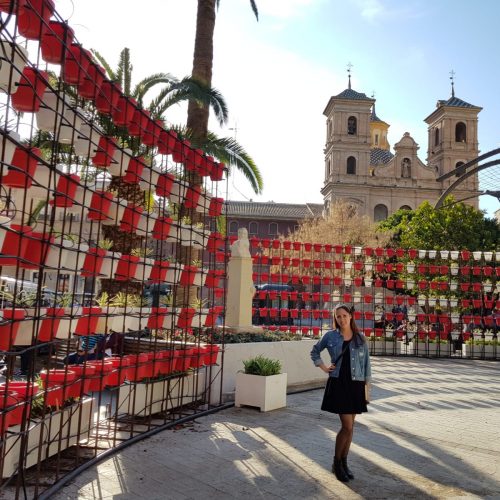
What You Should Know About Murcia
Murcia, Murcia
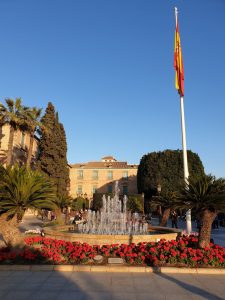
Transport options to arrive: Bus, Train, or Car
Murcia is easily accessible by bus from a variety of cities around Spain as well as by car. The city is also located on the cercanias train you can catch as far as Alicante and along many picturesque, smaller towns along the route. The RENFE train station is serviced by longer-distance lines to Valencia and Zaragoza but I was unable to find trains that go directly from Madrid or Barcelona. Keep in mind that many bus and train options are long and expensive and renting a car may end up being more affordable.
Pro-Tip: If you’re driving and planning to spend the weekend in the city be sure to plan ahead and book a hotel or AirBnB that includes parking arrangements. The public parking garages are surprising expensive for the south of Spain. Also be sure to read hotel reviews as many of the accommodations that list parking in their amenities are known to run out of parking spaces.
Recommended time of year to visit and length of visit: Murcia can get quite hot in the summers but also stays relatively warm in the winter, at least in the sunshine of midday. We planned a trip on the first weekend of March and were happily surprised to be able to go without coats (until around 7pm). While you can see the main sights while on a day trip, we recommend at least a weekend to really take in everything the city has to offer.
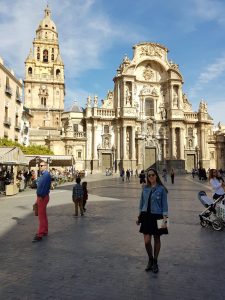 Fun Fact: The autonomous region of Murcia is in fact the only of Spain’s 16 regions to consist of just one province, all of which take the same name. “Murcia” can refer to this city as well as its provincia and comunidad autonoma, so be sure you know which one you’re talking about!
Fun Fact: The autonomous region of Murcia is in fact the only of Spain’s 16 regions to consist of just one province, all of which take the same name. “Murcia” can refer to this city as well as its provincia and comunidad autonoma, so be sure you know which one you’re talking about!
Top three must-sees:
1. La catedral de Murcia: It would be impossible to list anything else as the top attraction in Murcia as this cathedral is emblematic to the city and a true masterpiece of the Gothic, Renaissance, and Baroque architectural styles—each of which can be admired from without and within the famous building.
2. Plaza Santo Domingo: This square offers a beautiful setting to take in the city. Grab something for lunch and find a spot on the wrap-around benches and you’re sure to be entertained by all of the hustle and bustle. There’s also impressive churches and palaces to to admire and (at least currently) a super cute wall of red and white potted plants to snap a photo with.
3. “The other side of the river”: At first glance, it may be easy to write off the importance or interest of wandering across the Segura River as the cathedral, town hall, and the rest of the old town is located on the north side of this water barrier. However, this side of the river offers up a completely different vibe and is a treat to walk around. I recommend taking a stroll through the Jardin de Floridablanca and checking out any of the multiple museums that strike your fancy.
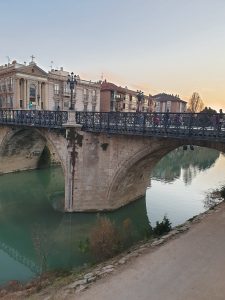 One thing to eat: Pastel de carne
One thing to eat: Pastel de carne
Murcia has long been known for its pastelerias, or bakeries, but that does not mean you have to eat something sweet while you’re here (although there are plenty of scrumptious bites for your sweet tooth). A unique savory option is the pastel de carne, or meat pie, that was once popular across Spain but has disappeared elsewhere since the Medieval times. It’s filled with meat, egg, and chorizo and topped with a flaky, filo dough upper crust. (Special thanks to Emily Luxton’s great blog post on Murcia cuisine because I actually went the sack-lunch-in-Plaza-Santo-Domingo route and therefore greatly appreciated her advice on what to eat in Murcia!)


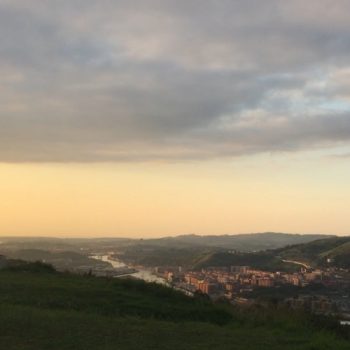


One Comment
murciemari612409@gmail.com
Probably people who frequently visit this place want to be eternal! It is paradise. Without any doubt everybody wants to visit there.